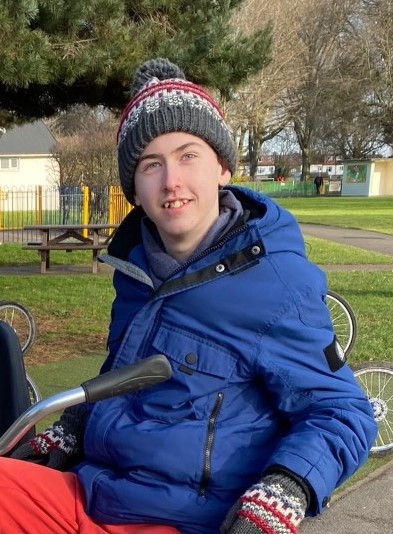The story of Luke
Our son, Luke, was diagnosed with epilepsy when he was 2 and a half years old. As any parent with a child with epilepsy knows it is a very frightening time trying to figure out this awful disease and trying to find the courage to stay strong for your child as you watch them have heart-breaking seizures and struggling through their early life with learning difficulties, speech delays and difficulty making friends who understand them.
Luke was lucky enough to have relative seizure freedom for a few years but when he turned 8 his seizures came back more ferociously than before. When he was 10 he had an awful fall during a seizure when visiting my parents on holiday in South Africa. We noticed that his walking was starting to deteriorate and he was constantly vomiting. We were worried this was all related to the fall that he had. After many tests back home our doctors found that he had a lesion on his brainstem and slight shrinking of his cerebellum but they couldn’t explain the worsening of his walking, the vomiting and the uncontrolled seizures.
Over the next 5 years and many scans, tests and biopsies later and still with no answers, Luke was now in a wheelchair fulltime, his seizures were continuous and very severe, his learning difficulties had become so much worse, he was drooling all the time, he wasn’t eating very well and he was losing so much weight. He was struggling to communicate and was just lying on our couch most of the day, hardly going to school due to the continuous amount and severity of his seizures. Our neurologists were at a complete loss as what to do as they had run all the tests that they could and had tried Luke on a number of anti-epilepsy medications with horrible side effects. They had prepared us to accept that our son may have to live with an undiagnosed condition.
As a last resort they put us forward for whole genome sequencing and it took approximately 10 very long months but Luke was finally diagnosed with a rare condition of two variants in his CAD gene. The CAD gene provides information for the body to make an enzyme, which is required as one step in the “production line” that produces chemicals called pyrimidines. Pyrimidines are required for many functions in the body including making DNA, and in the production of haemoglobin. Pyrimidines can be made “from scratch” (de novo) or can be re-cycled by the pyrimidine “salvage” pathway. Having CAD gene deficiency meant that Luke was unable to make this enzyme naturally. This explained all of Luke’s symptoms and although it was a lot to take in, the best news of all was that there was a potential treatment that could help him reverse some of these symptoms.
Luke was put on a course of uridine monophosphate and so far he is doing really well. It is still very early days but he has regained some of his walking and he’s learning so much more at school. His seizures have drastically reduced (only 1 in 8 weeks!) and he has put on 10 kilos. There is now light at the end of the tunnel and we can see a very promising future ahead for him. It has been a really wonderful start to the year and we can’t wait to watch Luke finally grow and develop into the wonderful, kind, loving and handsome young man he is destined to be.
